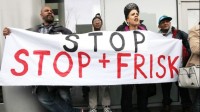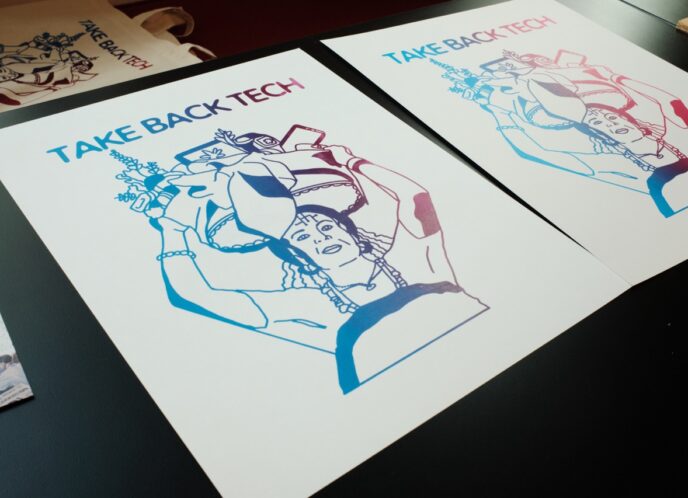“If a friend of yours was arrested, and after they were released they told you they had been ‘framed,’ you would know what they meant: The police had arranged the evidence [so] your friend looked like they were obviously guilty. In other words, the police had created a frame of reference that portrayed a specific view of reality-focusing in on some items—and [cropped] out other items.”
From Myths, Messages and Tactics of the Political Right, Political Research Associates
Jason Bourne books drop knowledge
 I love crime fiction. It’s one of my weaknesses. I will make dates with a good mystery or suspense novel and ignore my friends. The Jason Bourne series is one example, which was turned into several blockbuster movies starring one of my favorite socially conscious actors Matt Damon. Jason Bourne gets framed for doing some horrible things, making for action-packed fighting sequences, complicated international financial transactions, and ultimately, justice and retribution for the bad guys.
I love crime fiction. It’s one of my weaknesses. I will make dates with a good mystery or suspense novel and ignore my friends. The Jason Bourne series is one example, which was turned into several blockbuster movies starring one of my favorite socially conscious actors Matt Damon. Jason Bourne gets framed for doing some horrible things, making for action-packed fighting sequences, complicated international financial transactions, and ultimately, justice and retribution for the bad guys.
The Jason Bourne books and corporate news media have something in common. White people are often portrayed as the good guys, victims of circumstance, and are generally sympathetic characters—even when they commit crimes. I can tell you that this is a fact that comes from source X or Y, but if you’re reading this and don’t believe me, you’ll understand why you don’t in a second.
What does it mean when, of the 2.3 million people locked up in the criminal justice system (not including the almost 400,000 in immigration detention for a civil offense), 60 percent are people of color? What does that signal to us when black women were the fastest growing group in the prison population—at a rate 6 times greater than the rate of white women a few years ago? What does it mean that 84 percent of the near 600,000 unconstitutional stops-and-frisks by the NYPD were of men of color, even though stopped whites were in possession of contraband or drugs at a greater rate than the people of color?
400,000 in immigration detention for a civil offense), 60 percent are people of color? What does that signal to us when black women were the fastest growing group in the prison population—at a rate 6 times greater than the rate of white women a few years ago? What does it mean that 84 percent of the near 600,000 unconstitutional stops-and-frisks by the NYPD were of men of color, even though stopped whites were in possession of contraband or drugs at a greater rate than the people of color?
Why it puts me in a pickle when reporters ask: “Why should criminals get a break?”
Some facts for you fact-mongers out there.
- Black and Latin@ people appear in the news as perpetrators more often than victims
- Black and Latin@ people who appear as perpetrators on the news are portrayed as threatening and violent more often than white perpetrators
- Black and Latin@ children who go missing are not reported on by national media
- Media coverage of rape and sexual assault of Black and Latin@ women is minimal, minimizes violence, and often uses victim-blaming frames.
 Corporate media with the help of the right has done a superb job of creating popular—and fundamentally flawed—frames that play on the emotions, and deeply embedded racism—internal or otherwise—of the average American. Some familiar ones are “tough on crime,” “do the time,” “prisons keep ‘us’ safe,” “the law is just,” and “justice is blind.” The tricky thing about these frames is that they aren’t based on facts. Often, they’re not even based on logic when approached from most angles, whether it’s public safety, rehabilitation, deterrence or recidivism.
Corporate media with the help of the right has done a superb job of creating popular—and fundamentally flawed—frames that play on the emotions, and deeply embedded racism—internal or otherwise—of the average American. Some familiar ones are “tough on crime,” “do the time,” “prisons keep ‘us’ safe,” “the law is just,” and “justice is blind.” The tricky thing about these frames is that they aren’t based on facts. Often, they’re not even based on logic when approached from most angles, whether it’s public safety, rehabilitation, deterrence or recidivism.
Can you afford to call your mom on Sunday?
Another popular frame is “you do the crime, you pay the time.” But just how much should people pay? How about 10 to 15 dollars for a fifteen-minute call? Seems like a lot, right? It is. Today, the Center for Media Justice, Working Narratives, and Prison Legal News launched the Mother’s Day of Action as part of the Prison Phone Justice campaign. The action is part of a campaign to pressure the Federal Communications Commission to pass the Wright Petition, which has been in front of the Commissioners since 2004. Originally filed by Martha Wright, the grandmother of a former prisoner, the petition exposes the relationship between prison administrators and commercial phone companies that allow exorbitant call rates.
Another fact: People who stay connected to their loved ones while incarcerated have decreased recidivism and have a better chance when re-entering the world outside. And kids—including the 2.7 million children with an incarcerated parent—who communicate with their parents have a better chance at being successful in school, employment, and relationships.
Just how many people, and at what cost, have to pay the price? Before Mother’s Day this year, take a moment to share your prison phone story and to tell the FCC to pass the Wright Petition—and don’t forget to call your mom.



